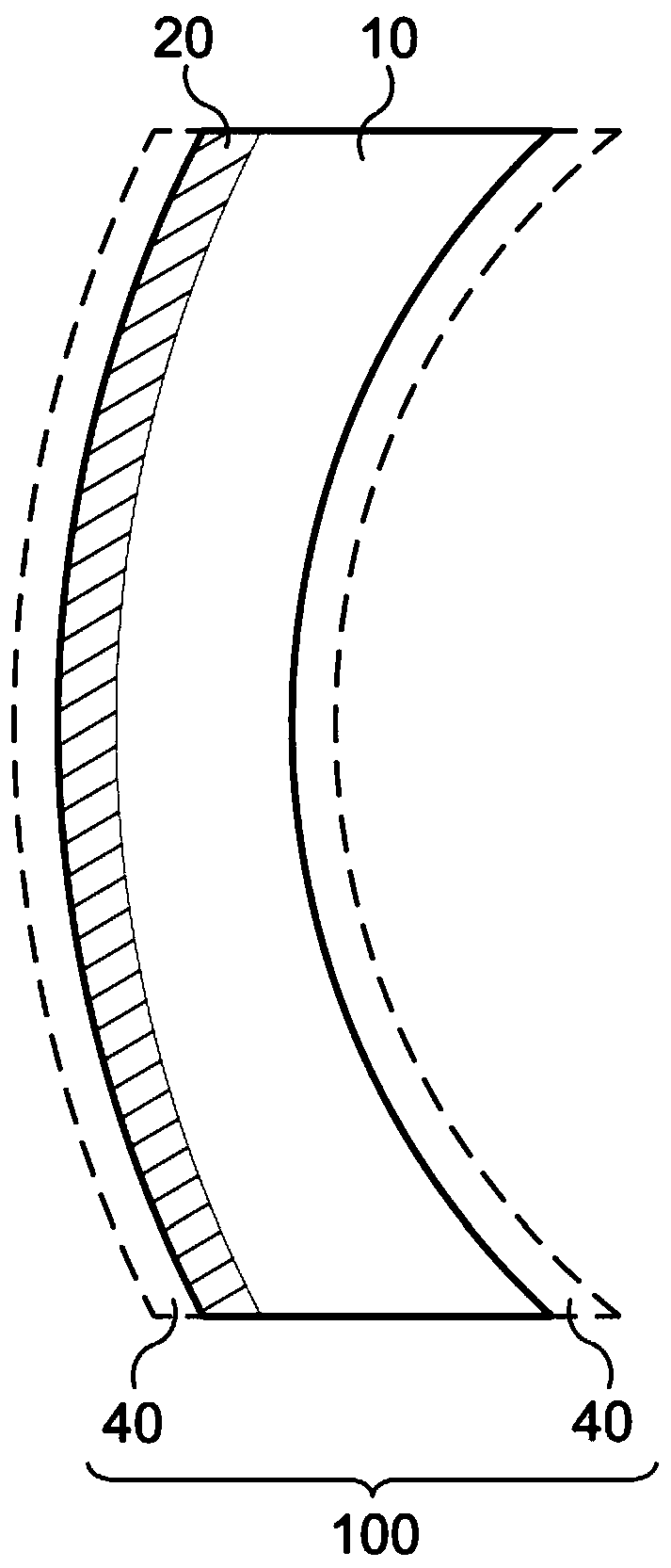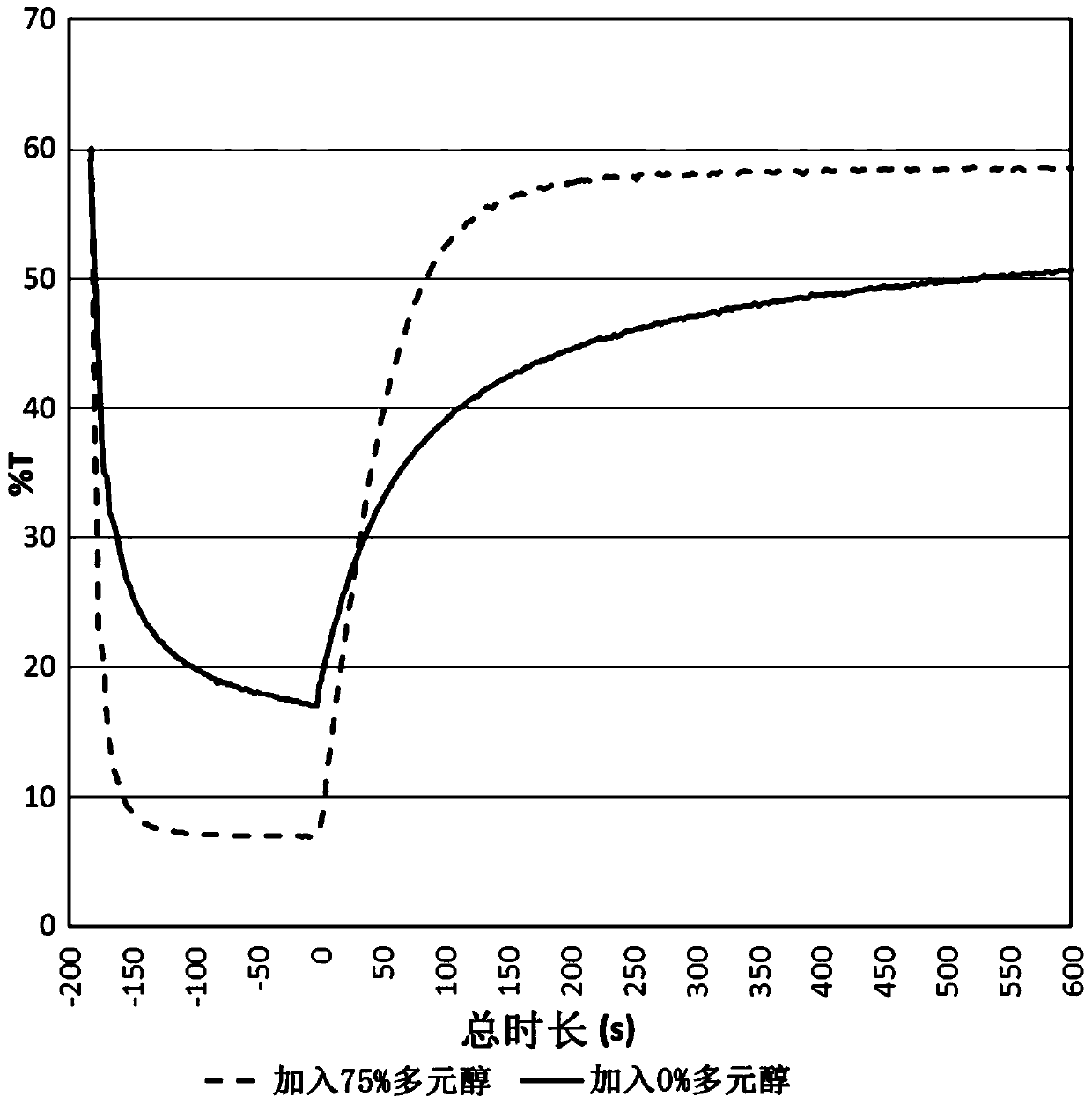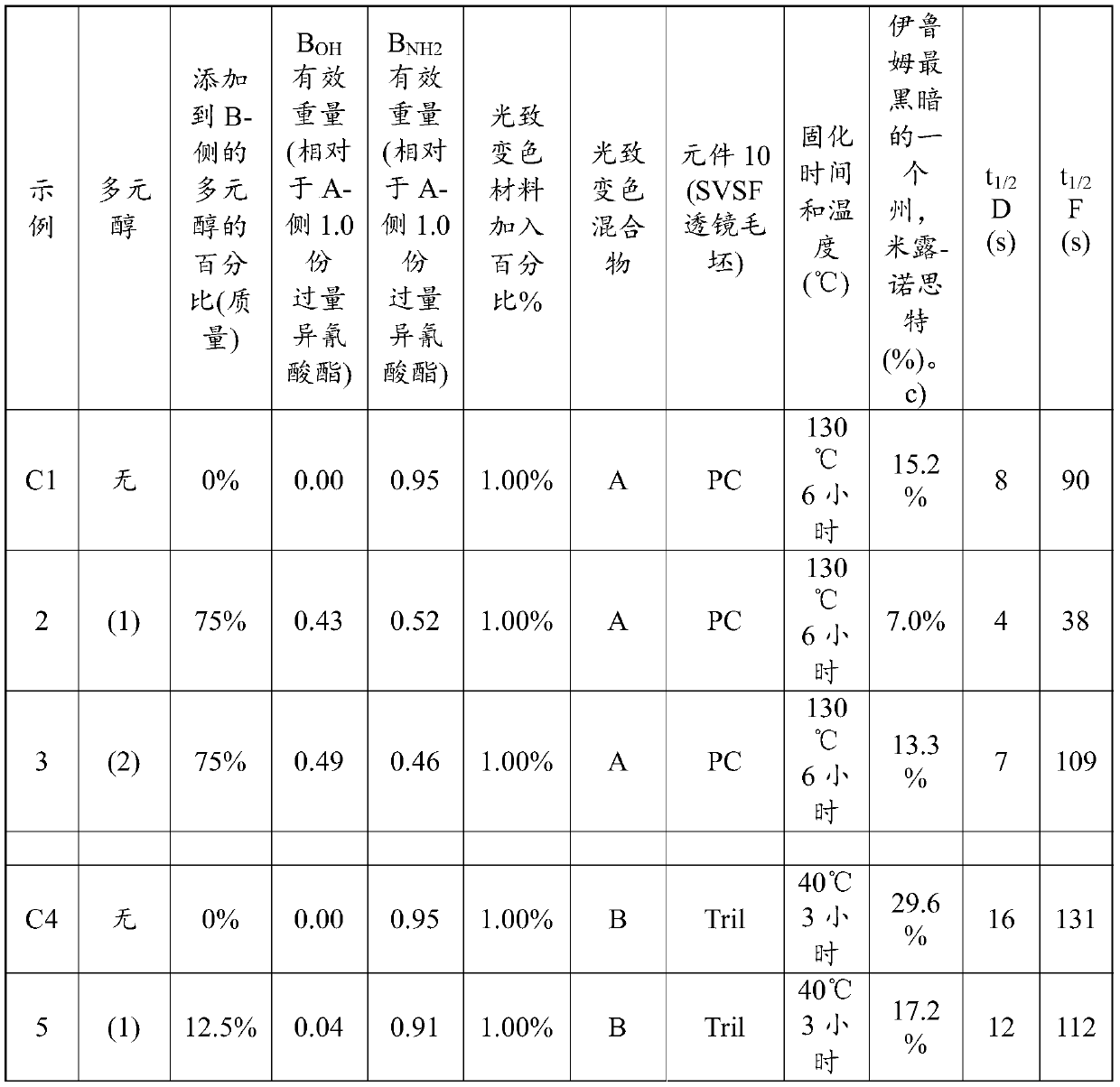Optical articles comprising photochromic poly(urea-urethane)
A urethane, photochromic technology, applied in the field of optical imaging, can solve problems such as difficulties
- Summary
- Abstract
- Description
- Claims
- Application Information
AI Technical Summary
Problems solved by technology
Method used
Image
Examples
example 2
[0110] figure 2 The advantages of this embodiment of the invention are illustrated by showing a comparative example. In Example C1, a commercially available B-side material contained only amino-reactive species combined with excess isocyanate-reactive groups on the A-side at an effective weight ratio of B to A of 0.95 parts amino:1 part isocyanate. In Example 2, polyether diol is added to modify the B-side active material so that the B-side now includes 0.43 parts by effective weight of hydroxyl species and 0.52 parts by effective weight of amino species (B TOT is 0.95 parts, where B OH 0.43 parts, B NH2 0.52 parts), rather than just 0.95 parts of amino species, reacted with an effective weight ratio of 0.95 parts with 1.0 effective parts by weight excess of isocyanate species on the A-side. Such as figure 2 As shown, Example 2, an ophthalmic lens prepared according to this example of the invention, compared to the addition of the same photochromic dye mixture to the pol...
PUM
| Property | Measurement | Unit |
|---|---|---|
| thickness | aaaaa | aaaaa |
| transmittivity | aaaaa | aaaaa |
Abstract
Description
Claims
Application Information
 Login to View More
Login to View More - R&D
- Intellectual Property
- Life Sciences
- Materials
- Tech Scout
- Unparalleled Data Quality
- Higher Quality Content
- 60% Fewer Hallucinations
Browse by: Latest US Patents, China's latest patents, Technical Efficacy Thesaurus, Application Domain, Technology Topic, Popular Technical Reports.
© 2025 PatSnap. All rights reserved.Legal|Privacy policy|Modern Slavery Act Transparency Statement|Sitemap|About US| Contact US: help@patsnap.com



